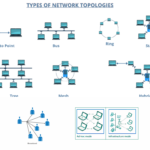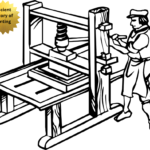Information Technology has been established as a new teaching subject. IT has been included in the courses of various schools around the world. Usually (such as literature, economics, politics, chemistry, physics, mathematics) in the sense that we call several subjects as the main subject of acquiring knowledge, this information technology or IT is not such a subject, because the invention and development of IT has been organized from practical needs and applications. In the last half of the twentieth century and in the twentieth century alone, the importance of IT is immense, so the discussion of whether it is an academic subject is meaningless. It should not be forgotten that the main subjects of acquiring knowledge in this subject, especially physics and electricity, have to be used.
Information technology is not a single technology. It has emerged from the combination and integration of many technologies. Those technologies have been enriched by practice for a long time, in many cases for ages, and have finally become part of IT. Among these technologies, communication technology, telecommunication technology, audio and video technology, and computer technology are particularly noteworthy. Although they are part of IT, these various technologies still maintain and will continue to have their own qualities and uniqueness.

Definition of Information Technology:
The scope of the definition of information technology is bound to be very broad: Information technology is the use of micro-electronic systems for receiving, collecting, storing, processing, analyzing and serving all types of information through computers and telecommunications.
There may be many more definitions of information technology, but this definition is quite comprehensive and its latest description is acceptable for our work.
Information technology operations:
Humans always work with information. It is dependent on the five senses and the nervous system to collect, receive, store and use information. All of this is limited to the ability of humans to move and look after. As a result of the spread of machinery and technology, this boundary of movement and the boundaries of human care have expanded widely. Just as humans used to work through the use of the nervous system before exchanging information through technology, even after the advent of technology, humans are able to do the same activities through machines.
The difference is that technology makes it possible to collect, store, receive, use and serve information from much more information and a much wider range of boundaries. The work of information technology is to collect hundreds of millions of cores of information in the computer room and perform the activities that make it suitable for use.
Although information technology provides information processing systems, after its application, how people work, how decisions are made in an organization, everything changes. Through this, the efficiency of an organization’s activities increases, the ability to provide services increases, and above all, management improves.
Elements of Information Technology:
It has been said at the beginning that information technology is not a single technology – it is a combination of several technologies. These different technologies have their own qualities and uniqueness. For example, information technology is not possible without electronics science, but electronics is accepted as a separate science even though it is used in information technology.
We will try to understand these three technologies: information, knowledge and data.
- Information:
The word information can be used and applied to many things. Just by saying something, it can become information. ‘I know’ or ‘such and such a person knows’, guidance, formulaic instructions, news, informational matters that can be known – these are called information.
2. Knowledge:
- The word knowledge has four lexical meanings:
- The expression of the theoretical activities of a subject;
- The complete expression of what is recognized on the subject;
- A book written on a subject with theoretical or practical evidence;
- A subject that has high stability and acceptance.
Even if there is no theoretical or proven element of information, but that information can become knowledge when it has a recognized theory. Theory has to be presented through evidence or on the basis of tested evidence through historical evidence.
Although we associate these two with information and knowledge in daily life, we draw a difference between ‘a person who knows a lot’ (especially in local matters, current politics, fresh news, etc.) and a ‘wise person’. In the present era of computer technology, there is a fear that these two will become one. There was a time when computers were only used to exchange information, but now computers are being used to store and use knowledge. Still, it is necessary to know the difference between information and knowledge.
According to the science of bookkeeping, the content of published and recognized books is considered knowledge, but the news and writings published in magazines, daily newspapers and periodicals are called ‘information’.
3.Data:
The statement that computers store information will be proven wrong if you think deeply. Basically: computers work with ‘data’. This data comes to the computer user as ‘information’ because the computer presents everything as information from the combination of data.
In the case of computers, it means one thing and in the case of libraries and information science, it means another. The numbers or letters that a computer works with are called ‘data’. Numbers, signals or characters or symbols that a computer can receive, store and process are called ‘data’. These ‘data’ do not have any meaning or significance on their own, but when they become meaningful together, then their information is said to have been processed, in fact, it is “data” processing.
The job of a “data” item is to describe a quality of a piece of paper. Let’s assume that information about a reader will be stored. That is, when a reader is an object, he has to be distinguished from other readers. His name, date of birth, address, phone number (if any), father’s name etc. will be his attributes. These attributes will be kept in the ‘Data’ item. By combining these ‘data’ we will get information about that person.
Information Technology (IT) is essential for modern operations as it streamlines processes, enhances communication, and improves data management. The key components of IT—hardware, software, networks, and human resources—collaborate to ensure smooth functionality across various sectors. Ultimately, efficient IT operations drive organizational effectiveness, foster innovation, and enhance long-term competitiveness in an increasingly digital landscape.



